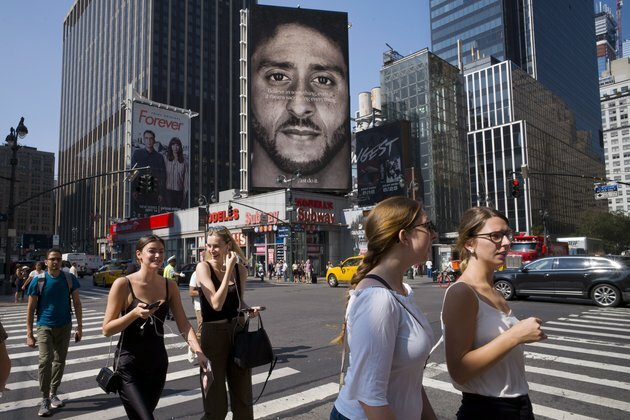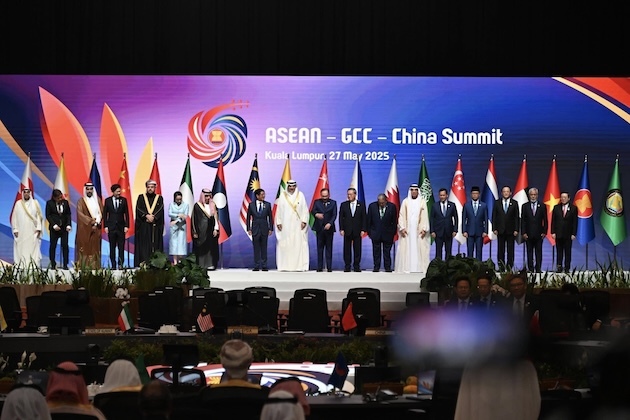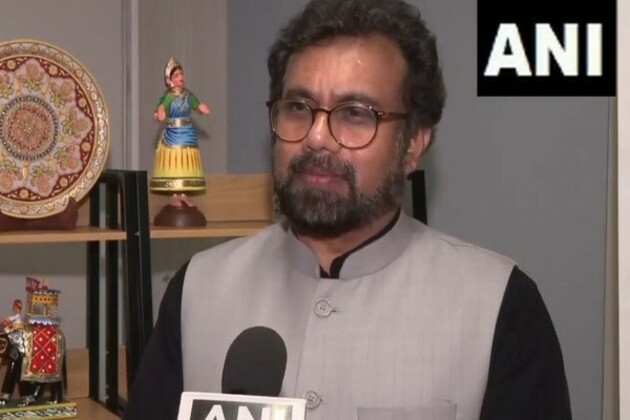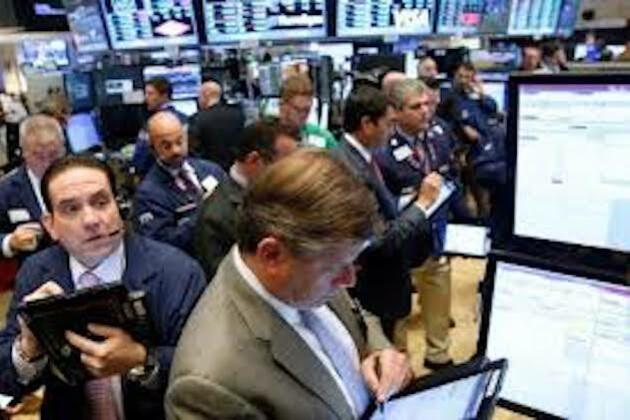NFT performance art: Corporations could capitalize on protest
The Conversation
13 Apr 2021, 02:09 GMT+10

Russian artist Petr Davydtchenko made what what he claims was the first performance art NFT in February. According to an article in The Art Newspaper, in a digital recording, Davydtchenko "eats a live bat in front of the European Parliament in Brussels."
An NFT, or non-fungible token, is a digital record of the stake in ownership of a digital object (but not the copyright), often an artwork. This digital certificate says, "I paid for this special thing, now it's mine!"
Read more: What are NFTs and why are people paying millions for them?
The Art Newspaper reports Davydtchenko's "performance" had received only one bid of 2.5 wrapped ethereum, valued at $3,848 when the story was published on Feb. 26. But profits for some NFTs go into the millions.
Davydtchenko says the event was a protest against pharmaceutical companies. Davydtchenko's performance art references vaccines and COVID-19.
As a scholar of communication and performance studies, what interests me is how NFTs are redrawing parts of the art world in radical ways by raising questions about how artists, audiences and critics understand performance, criticism or protest in a capitalist society.
We should keep an ear open not only to questions about authenticity and who profits but also about what these kinds of transactions mean for us as spectators, virtual audience members and human beings.
Performance check on war
NFT art may seem new and bizarre, but can rightly be seen as part of a longer tradition of performance art and cultural criticism.
As a response to the trauma of the First World War, the Dada art movement formed in Zurich, Switzerland. In 1916, performance artist Hugo Ball drafted a Dada manifesto.
Ball's work used nonsense words and costumes, as he said, to challenge "the rationalized language of modernity," emblematic of the "agony and death throes" of the age. Into the 1920s, performers continued to reflect on the violence seen in Europe and the excesses of the roaring '20s.
In the 1960s and '70s, the Fluxus movement, a revival of many Dadaist ideas, used performance in a similar way. One pioneering example of this was Yoko Ono's "Cut Piece" first performed in Kyoto, Japan, in 1964.
Ono sat on a stage and instructed audiences to use scissors to remove parts of her clothing. Ono told Reuters 39 years after the first performance that she did the performance "against ageism, against racism, against sexism and against violence." Some critics suggested the performance was also a comment on the conflict in Vietnam.
Role of spectator, purchaser
"Cut Piece," and similar performances are living moments of shared human connection and meaning that are time-and-place specific. One can imagine that meanings understood by audience members of "Cut Piece" in Japan 1964 or in France 2003 could differ for many reasons.
Such site-specific resonances are challenged when a performance is tokenized as an NFT. Is Davydtchenko's "performance" the eating of the bat? Or is it the NFT pointing to a recording of that event? Or is the performance would-be bidders or critics engaging in a public debate about devouring an animal whose species is associated with COVID-19? Davydtchenko's work raises questions about what is being bought and sold, and the role of the purchaser or spectator.
Performance studies pioneer Peggy Phelan argued that performance can disrupt and challenge the capitalist art market that creates value often disconnected from relationships between artists and audiences. From a Marxist perspective, this disconnected "extra" meaning is "surplus value," the value that exceeds the money a worker earns for their labour.
Changing the 'aura' of art
Phelan's analysis suggests how NFTs follow a tradition of art criticism that has questioned moral responsibility in the age of mass production and mass media consumption.
In 1936, German critic and philosopher Walter Benjamin, of the famed Frankfurt School for Social Research, applied Marxist ideas about how manufacturing workers become alienated from their labour and applied them to art.
Performance scholar Philip Auslander has explained how in a capitalist society alienation means "workers become commodities when they must sell their alienated labour in the marketplace, just as other goods are sold."
Benjamin suggested new media technologies "demystified" art. The reproduction of art challenged what he called its "aura," or its unique originality. Reproducing visual art, for example, through printing, freed it from the precious spaces of the museum and made it accessible to the working classes. No more would a person need to travel to see the Mona Lisa: It was now available on a postcard or T-shirt.
The problem, argued Benjamin, is that "aura" is also a relationship to meaning. Once the "aura" is gone, artwork can be repurposed for purely economic, and even dangerously political ends. Indeed, the Nazis used symbols, artworks and mass branding to legitimize and circulate Fascist ideologies.
Read more: How Nazis twisted the swastika into a symbol of hate
Culture critic Jonathan Beller notes Benjamin recognized how new media could be used to preserve and advance ancient "cultic values" such as genius, mystery and authenticity, and understood fascism as advancing "the introduction of esthetics into political life" to promote "cult worship through mass entertainment." So far, we haven't seen NFTs directly associated with fascism, but as Beller notes, through NFTs, political manipulation through art could be a possibility.
Instability of dissent?
Such questions of manipulation can be explored through considering Davydtchenko's performance.
Is Davydtchenko's bat eating an act of political dissent, as he claims, or simply a cruel event? What of those who pay for it or share the publicity: Have they been manipulated into amplifying something grotesque?
There is also the question of the stability of digital work itself. An NFT's link to a digital file is based purely on trust and potentially error-prone technology. But what if stolen NFTs could surface in strange places? The site Hyperallergic reports that some buyers say "hackings have exposed holes in a technology often touted as a foolproof record of ownership." Could NFTs become the next forms of cybercrime or hate crimes, akin to defacing a public mural, or Zoom-bombing a performance?
When corporations seek to capitalize
Applying performance and cultural critiques to NFTs helps us consider how political resistance may be either amplified or co-opted when corporations seek to capitalize on political actions.
As I have written before, Nike quickly sought to capitalize on NFL player Colin Kaepernick's 2016 kneeling during the U.S. national anthem, an act of protest against police brutality and racial injustice. Could Nike look to sell the "kneel," or other similar acts, as an NFT?
When we see the prices some are paying for NFT art, we must assume that more performances will circulate as NFTs, and consider what this may mean for the possibilities of performance and political dissent.
Author: Lowell Gasoi - Instructor in communication studies, arts advocacy, Carleton University 
 Share
Share
 Tweet
Tweet
 Share
Share
 Flip
Flip
 Email
Email
Watch latest videos
Subscribe and Follow
Get a daily dose of Malaysia Sun news through our daily email, its complimentary and keeps you fully up to date with world and business news as well.
News RELEASES
Publish news of your business, community or sports group, personnel appointments, major event and more by submitting a news release to Malaysia Sun.
More InformationSoutheast Asia
SectionXenon gas treatment helps climbers reach Everest faster and cleaner
KATHMANDU, Nepal: Using xenon gas treatment and new technology is making climbing Mount Everest faster and better for the environment...
ASEAN Reaffirms Commitment to Myanmar Peace Process, Urges Ceasefire Extension
KUALA LUMPUR, Malaysia - At a meeting on Tuesday in the Malaysian capital, Kuala Lumpur, ASEAN leaders reiterated their commitment...
Monsoon arrives 15 days early in Nepal
Kathmandu [Nepal], May 30 (ANI): The monsoon climatic effects have entered Nepal 15 days earlier than normal timings as the nation...
Asian Athletics Championships 2025: Gulveer Singh, Parul Chaudhary set new records in Gumi
Gumi [South Korea], May 30 (ANI): It was another exciting day for the Indian contingent at the Asian Athletics Championships in Gumi...
Indonesia declares support for India in fight against terrorism: All-party delegation member John Brittas
Jakarta (Indonesia), May 30 (ANI): CPI (M) MP John Brittas, who is part of the all-party delegation led by JD(U) MP Sanjay Kumar Jha,...
"Not a single man's achievement...collective achievement of every Indian": Congress MP Renuka Chowdhury criticises PM Modi
New Delhi [India], May 30 (ANI): Congress MP Renuka Chowdhury on Fridayreacted to Prime Minister Modi's promise to raze the hideout...
Business
SectionSkechers deal sparks wave of take-private talks amid trade turmoil
NEW YORK CITY, New York: As trade policy uncertainty rattles markets and slashes valuations, a growing number of U.S. retailers are...
Volvo cuts 3,000 jobs amid trade tensions and economic uncertainty
FRANKFURT, Germany: Volvo Cars, based in Sweden, is cutting 3,000 jobs to reduce costs as the automobile industry struggles with trade...
Amid losses, Nissan bets on e-Power hybrid to revive US sales
YOKOSUKA, Japan: Facing mounting losses and global restructuring, Japan's Nissan Motor Corp. is turning to its unique e-Power hybrid...
Wall Street ends volatile day higher
NEW YORK, New York - U.S. stock markets see-sawed Thursday as the judicial system became a key player in Donald Trump's trade wars....
French farmers jam Paris roads in push for eased regulations
PARIS, France: French farmers brought traffic to a crawl around Paris and gathered outside the National Assembly on May 26, using their...
Amid trade tensions, France, Vietnam ink deals worth $10 billion
HANOI, Vietnam: Amid shifting global trade dynamics and growing concerns over U.S. tariffs, France and Vietnam have signed more than...












